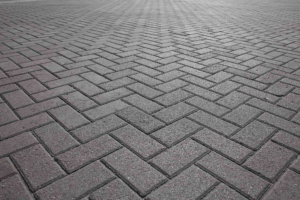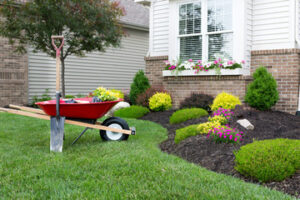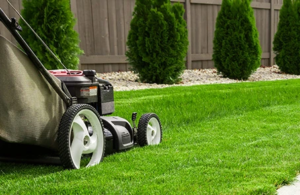Paving is the process of laying down a surface with durable material to create roads, walkways, and other infrastructure elements. It is essential to urban and rural development, connecting communities and fostering economic growth.
It is important to choose the right paving material for your project. Consider durability, maintenance, and cost. Contact Charleston Paving Solutions now!

Paved areas serve a vital function by providing safe and convenient routes for pedestrians, cyclists, and vehicles. They also beautify urban landscapes and enhance property values. In addition, they can create inviting public spaces that encourage social interaction and improve community well-being. However, achieving aesthetic harmony between form and function is not an easy task. Finding the right balance between functionality and beauty requires skill, creativity, and expertise. The town of Fort Lee has risen to this challenge, transforming its streets into an urban tapestry of pavement art. This innovative approach combines practicality and aesthetics, resulting in a beautiful and unique style that will set Fort Lee apart from other cities.
One way to achieve an aesthetic balance is by using pavers with different textures and colors. This allows designers to experiment with design and evoke a variety of moods. For example, a circular paving pattern adds a dynamic element to landscape architecture, while a geometric pattern creates a sense of order and contemporary elegance. In addition, the choice of material is essential. For instance, concrete pavements are durable and long-lasting but require significant amounts of energy to produce, whereas asphalt is less expensive but has a low environmental impact.
Aesthetic paving can be used to transform parking lots, sidewalks, and walkways into welcoming and functional spaces. By choosing the right color, texture, and patterns, you can achieve a variety of aesthetics, from tropical paradise to modern minimalism. In addition, paved surfaces can be made more attractive by incorporating natural elements such as plants and trees.
The most important factor in determining the aesthetics of your pavement is your choice of color. While concrete pavers and asphalt offer limited color options, you can use a wide range of tints to achieve your desired look. However, the color of your paving should complement the surrounding landscape and architecture. For instance, a dark colored paving material may be more suitable for a suburban setting than a downtown cityscape.
When it comes to enhancing the appearance of a paved surface, regular cleaning and maintenance are the best ways to ensure a high-quality finish. A thorough cleaning and sealing process can protect your paving from weathering, staining, and damage. In addition, a professional paving company can help you choose the right paving materials to suit your project’s needs.
Durability
Paving involves laying down durable materials like asphalt, concrete, or bricks to create a hard surface for roads and walkways. The durability of these materials depends on several factors, including the material used, the environmental conditions, and the amount and type of traffic. It is important to understand these factors before selecting the best paving material for your project.
Asphalt is a versatile and affordable material that is commonly used for roadways, driveways, and parking lots. It is made from heated Bitumen, which is mixed with a variety of aggregates to form a dense and solid substance that is both waterproof and elastic. It is also resistant to cold temperatures and can withstand heavy traffic.
The condition of the underlying base layer and adequate drainage are key factors that determine how long an asphalt pavement will last. When the underlying layers are soft, it can lead to cracks and other damage to the surface. In addition, proper drainage prevents water from accumulating under the pavement and weakening the structure.
Climate can also have a negative impact on the lifespan of asphalt. Dry, hot weather can cause the pavement to become brittle, while wet and humid climates can encourage moisture to seep through the surface and into the underlying layers. This can contribute to a number of issues, such as premature failure and extensive, costly repairs.
While the lifespan of asphalt is relatively short compared to other paving materials, it can be extended with proper maintenance. Regular sealcoating, crack filling, and other routine repairs can keep the surface looking its best and functioning properly. In addition, a proactive approach to maintenance can reduce the overall cost of ownership by preventing major problems before they occur.
In general, paved surfaces require periodic repairs and resurfacing to maintain their functionality and appearance. Performing these tasks on a timely basis can significantly extend their life expectancy. The quality of the initial paving job can have a significant impact on longevity, as well. High-quality materials and skilled contractors can ensure that the paving will stand up to the test of time.
Maintenance
Pavement maintenance is a critical aspect of construction and infrastructure development. It helps connect people and businesses, while providing safe and sustainable transportation networks. The maintenance process involves various activities including preventive, corrective, and rehabilitation. Preventive maintenance includes treatments that can be performed while a pavement is still structurally sound and exhibiting minimal distress. This is especially important when it comes to reducing the rate of decline in pavement condition. Corrective maintenance is the type of work that is required when the pavement has already deteriorated to a point where it needs repair. This can include surface treatments and more extensive repairs, such as pothole patching or slab replacement for rigid pavements.
Maintaining paved areas requires routine cleaning and preventing weed and moss growth. Sweep regularly with a stiff-bristled broom and rinse frequently with a garden hose to remove organic debris. It’s also a good idea to apply a pre-emergent weed control solution to avoid weeds from lodging in the cracks between the pavers. In addition, re-sealing is recommended every few years to protect the paving from the elements and routine wear.
In shady or damp climates, mold and mildew can develop in the joints between pavers, which is a major problem for aesthetics as well as health concerns. To eliminate mold and mildew, regular sweeping or blowing with a leaf blower is recommended. This will help prevent the build-up of organic material, which can lead to a fungal environment that promotes the growth of mold and mildew.
Performing preventive maintenance on your asphalt surfaces can save money and extend their lifespan. However, it’s essential to identify the best maintenance strategies for your specific location and traffic conditions. In general, asphalt will deteriorate at an accelerated rate when exposed to heavy vehicle traffic and frequent exposure to the elements. This is why preventive maintenance is a crucial part of the overall pavement life cycle.
In general, a preventive maintenance program can be divided into three phases: resurfacing, repair, and rehabilitation. Resurfacing is a more expensive phase that involves removing the existing surface and installing a new one. It is most effective when performed in the early stages of a pavement’s life, before severe damage occurs.
Cost
The cost of paving depends on several factors, including the material used, labor costs, and transportation costs. The geographic location also influences the cost of materials. A good paving contractor will provide an accurate estimate of the total project cost and will not charge for hidden fees. To get the best deal, compare prices from several local paving contractors. Make sure you ask for a detailed estimate and warranty before the work begins.
Asphalt is a popular paving material due to its affordability and durability. It is generally less expensive than concrete and can last up to 30 years if properly maintained. A well-maintained pavement can increase property values and add to the aesthetic value of a home. It is important to choose a reputable paving company with experience and a proven track record.
When choosing a paving material, consider the amount of traffic and how long you want the surface to last. The thickness of the asphalt layer will affect how long it lasts and how much maintenance is required. Residential projects, such as a driveway, require a thinner asphalt layer, while commercial areas need a thicker one for durability.
Pavement is an essential part of the transportation infrastructure, connecting communities and promoting economic growth. It is also vital for emergency response and public safety. Properly designed and maintained pavements reduce accidents and improve visibility and traction, which can save lives and reduce fuel consumption.
The process of paving is complex and requires significant investments in materials, equipment, and labor. Budget constraints may limit the scope of paving projects, and compromises in design and material quality can lead to premature wear and tear. In addition, the production and installation of paving materials has environmental consequences, such as resource depletion, energy consumption, and greenhouse gas emissions. Sustainable paving practices can mitigate these impacts by using recycled materials and minimizing waste.
Before a new asphalt surface is laid, a base layer of gravel or crushed stone must be installed to provide support and prevent settling or erosion. Then, the chosen paving material is applied and compacted to create a smooth, even surface. A final treatment, such as sealcoating or striping, can be added for extra protection and beauty.







